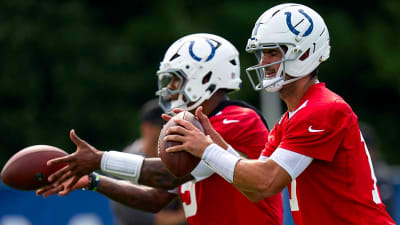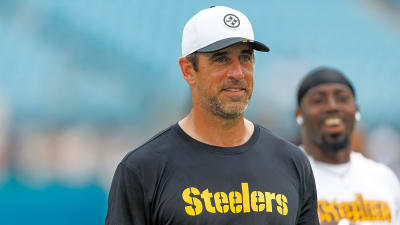
There have been several attempts to explain what makes the Florida Panthers special as they preside over the NHL with back-to-back Stanley Cups. And through this run, there’s been a reductive tendency to minimize what the Panthers do well, whether it’s through the lens of the salary cap and income tax laws, LTIR manipulation, or stating that the team benefits from unfair officiating, especially during the playoffs.
A lot of these complaints are utter nonsense. Florida excels because of its wealth of talent, a future Hall of Fame starting goaltender, a team-wide commitment to defensive responsibility, underrated pace across the board and an edict to create offence through the NHL’s best forecheck. It’s not just blanket toughness and tenacity, the Panthers truly operate a real, identifiable system that is applied across four lines.
Florida operates a standard 1-2-2 forecheck across four lines and its commitment to its structure, both in the offensive zone and neutral zone are paramount to its success. F1 attacks the puck, F2 takes a line of pursuit directly behind the puck, while D1 slides behind F2 to pick up the opposing winger. F3 covers effectively covers a wide range of the ice, playing high up, to account for D1 sliding up. D2 remains near the blue line. All three forwards understand their assignment and inherently know when their defensemen are pinching in to retain possession, with F3 in position to track back rather easily. This system works in conjunction to create a suffocating five-man presence, where the Panthers win pucks back to get a quick shot on goal, or engage in gruelling puck battles behind the net and along the wall, before the puck jams free to set up an optimal shot against a worn-out defence.
Will be a fun summer where at least six teams will try to emulate the Panthers, a team with two elite defensive forwards, about seven more that grade as very good, clearly identifiable forechecking/shot suppression principles, a Hall of Fame goalie and more. Congrats! (I guess)
— Arun Srinivasan (@Arunthings) June 18, 2025
And to be clear, it’s not impossible to beat the Panthers’ forecheck. During the first two games of their second-round series, the Maple Leafs killed the Panthers in transition , taking advantage of their opponent pushing too far up the ice without the requisite puck support. And while we tend to write about hockey as if results are net-perfect, you will get rare instances where Anton Lundell flubs a routine pass from Brad Marchand, which leads to a 2-on-1 chance where Morgan Rielly beats Sergei Bobrovsky clean, as evidenced in Game 1. In this instance, there’s still a foreboding message: you have to strike immediately when the Panthers make a mistake, or win one battle after another in order to escape their commanding grip.
19 SECONDS LATER RIELLY RESPONDS!!!!!!
️: Sportsnet pic.twitter.com/Fp1ZdLpWLh
— TheLeafsNation (@TLNdc) May 6, 2025
“Our forecheck is good because we make the right decisions at the line,” Panthers head coach Paul Maurice said via The Athletic, prior to the 2025 Final. “We don’t dump every puck. I don’t want them to dump every puck. But we’re also not going to try to make a play at the line every time, and over time, players have got a pretty good idea of what’s coming next. He’s going to put that puck in deep, or there’s a play to be made. If you can figure that part out of what you’re doing, you get to a fairly high percentage of being right and you play faster. That way, you forecheck a little faster. We were late on our forecheck in the first two games in Toronto. Our decisions had to change. We kind of figured it out.”
Here’s an example of the Panthers’ forecheck working to perfection, in Game 2 of the Eastern Conference Final against the Carolina Hurricanes. Panthers forward Carter Verhaeghe establishes the zone and tosses the puck into the low cycle. Matthew Tkachuk takes on the F1 role in a puck battle against Hurricanes defenceman Dmitry Orlov, while Sam Bennett comes in for support as F2, hounding Hurricanes defender Sean Walker. Although it’s out of the frame, Verhaeghe heads over from the wall to cover the opposite side of the zone as the F3, Forsling crashes down as D1 and Verhaeghe slides into Forsling’s place at the point.
Walker forces a quick pass to Hurricanes star forward Andrei Svechnikov, who begins to panic as Forsling takes away his time and space. Svechnikov turns backwards with Bennett and Forsling on him and forces a rushed pass off the wall, where Tkachuk cuts the lane off rather easily. Verhaeghe is still well-positioned at the point, covering for Forsling. Tkachuk one-touches the interception over to Forsling, who takes his time, surveys the net and wires a shot past Hurricanes goaltender Frederik Andersen. This is a prime example of the Panthers’ 1-2-2 system suffocating the Hurricanes, forcing a key mistake, with each player operating responsibly within the scheme.
Here’s an easy example from the Final. In the final minute of the first period during Game 4, Verhaeghe steals the puck from Trent Frederic and gets it over to Sam Reinhart, with both teams seeking a line change. Verhaeghe simply outworks Oilers defenceman Troy Stecher, wins the puck and finds a wide-open Anton Lundell for a 3-0 lead. This may not be proprietary, but it’s a simple example of how the Panthers are always looking for offence while playing a structured, defence-oriented game.
that Swaggy forecheck and that Lundy finish pic.twitter.com/nlehFrqZAR
— Florida Panthers (@FlaPanthers) June 13, 2025
Florida led the NHL in goals scored after a turnover during the playoffs via Jack Han. The ability to turn defensive wins and puck battle victories into instant offence is simply unmatched by any other NHL team. And under Maurice’s supervision, the Panthers’ forecheck is imperative to their identity. They hound down pucks, they roll four lines in perfect position and they effectively dare you to beat them by playing sound, competent hockey. It’s often forgotten that the Panthers are among the fastest-paced teams in the NHL, if you use shot volume as a stand-in for overall team speed, and in any event, they’ve managed to master the art of shrinking the ice.
Forecheck, backcheck, paycheck. Maple Leafs head coach Craig Berube installed his north-south system and for large stretches of the year, it worked. It cannot be solely incumbent upon Auston Matthews to lead the forecheck, with Chris Tanev and Jake McCabe’s superior position, shot-blocking and point-of-attack defending leading the charge on the back end, it has to be a concerted effort from all four lines. Toronto was out-chanced 26-0 by Florida to start Game 7 in large part due to the fact that Brad Marchand, Anton Lundell and Eetu Luostarinen flummoxed Morgan Rielly and Brandon Carlo’s attempts to break out of the defensive zone. Implementing the team-first approach to winning the puck back and being relentlessly disciplined in all areas of the ice may be the greatest takeaway for the Leafs entering the fall.
Forecheck, backcheck, paycheck.
The Florida Panthers smothered the Oilers and capitalized on the chances they created.
Back-to-Back #StanleyCup Champs. pic.twitter.com/U3GQ5AfPii— Mike Kelly (@MikeKellyNHL) June 18, 2025
For further reading, I highly recommend this piece from Bruce Curlock of OilersNation to get a deeper sense of what has made the Panthers a nightmare on the forecheck.
More must-reads:
- This Rangers defenseman should outperform his NHL Network ranking
- Nazem Kadri hopeful to make Canadian Olympic team despite camp snub
- The 'Second-overall NFL Draft picks' quiz
Breaking News
Trending News
Customize Your Newsletter
 +
+
Get the latest news and rumors, customized to your favorite sports and teams. Emailed daily. Always free!








